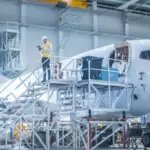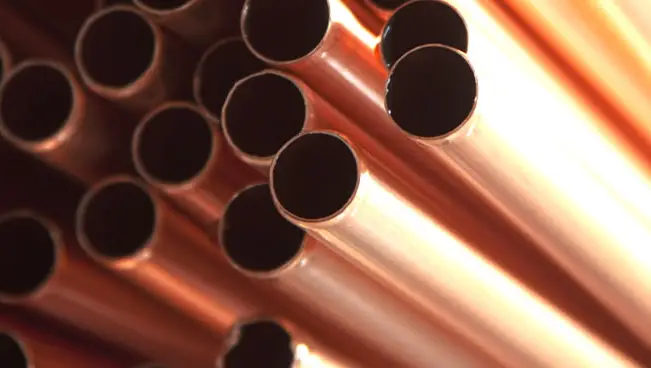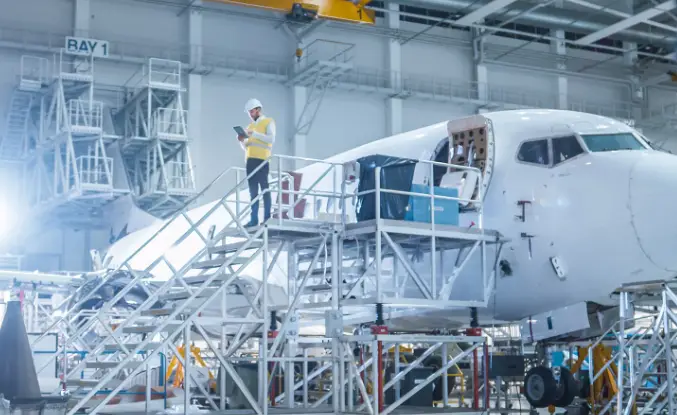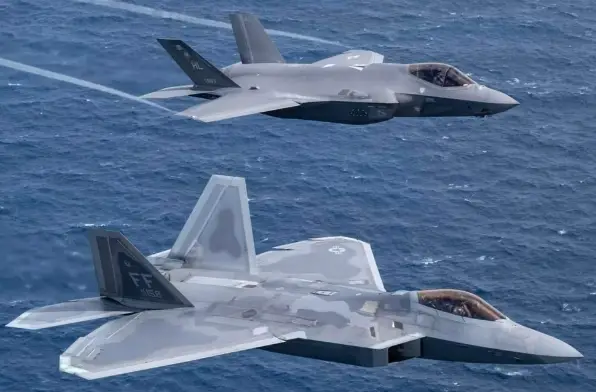Specialty copper alloys play a crucial role in the aerospace industry due to their unique properties, such as high thermal and electrical conductivity, excellent corrosion resistance, and superior mechanical properties. These characteristics make them ideal for various aerospace applications, from structural components to electrical systems.
Key Properties of Specialty Copper Alloys
- High Thermal Conductivity:
- Copper alloys are excellent conductors of heat, making them ideal for heat exchangers, radiators, and other components where efficient heat dissipation is critical.
- Electrical Conductivity:
- With outstanding electrical conductivity, copper alloys are used in electrical wiring, connectors, and components that require reliable electrical performance.
- Corrosion Resistance:
- Copper alloys resist corrosion from atmospheric and chemical exposure, enhancing the longevity and reliability of aerospace components.
- Strength and Ductility:
- Certain copper alloys, such as beryllium copper, offer high strength and ductility, which are essential for parts subjected to mechanical stress and strain.
Common Specialty Copper Alloys in Aerospace
- Beryllium Copper (BeCu):
- Properties: High strength, good electrical and thermal conductivity, non-magnetic, and excellent corrosion resistance.
- Applications: Used in springs, connectors, and other components requiring high strength and conductivity.
- Copper-Nickel (CuNi):
- Properties: Good corrosion resistance, particularly in seawater, high strength, and thermal stability.
- Applications: Used in cooling systems, heat exchangers, and marine applications within aerospace systems.
- Aluminum Bronze:
- Properties: High strength, excellent wear resistance, and good corrosion resistance.
- Applications: Used for landing gear components, bushings, and other wear-resistant parts.
- Copper-Silicon (CuSi):
- Properties: Good strength, corrosion resistance, and excellent machinability.
- Applications: Used in bearings, bushings, and other high-load components.
Aerospace Applications
- Structural Components:
- Copper alloys are used in various structural components where strength, weight, and durability are critical. This includes landing gear, engine components, and airframe parts.
- Electrical Systems:
- The high electrical conductivity of copper makes it ideal for wiring, connectors, and other electrical components in aircraft. These parts must reliably transmit electrical signals and power throughout the aircraft.
- Thermal Management:
- Copper’s excellent thermal conductivity is leveraged in heat exchangers, radiators, and cooling systems to manage the heat generated by aircraft systems and electronics.
- Aerospace Fasteners:
- Copper alloys are used in fasteners and fittings that must withstand extreme conditions, including high temperatures and mechanical stress.
Advantages in Aerospace
- Weight Reduction: Advanced copper alloys provide high strength-to-weight ratios, which is crucial for reducing the overall weight of the aircraft and improving fuel efficiency.
- Reliability and Durability: The corrosion resistance and mechanical properties of copper alloys ensure the reliability and longevity of aerospace components, reducing maintenance costs and downtime.
- Performance: The superior thermal and electrical conductivity of copper alloys enhances the performance of various aerospace systems, from propulsion to avionics.
Challenges and Considerations
- Cost: Specialty copper alloys can be more expensive than other materials, so their use is typically justified by the performance benefits they offer.
- Processing: The manufacturing and machining of certain copper alloys, like beryllium copper, require specialized processes and safety considerations due to the toxicity of beryllium.
Supply Chain Challenges:
The specialty copper alloy supply chain is supported by a network of key players who provide high-quality materials for various critical applications, especially in high-performance industries like aerospace. Companies like Aurubis, KME, Materion, and others play essential roles in ensuring the availability, innovation, and quality of these crucial materials. As the industry evolves, these companies continue to invest in technology and sustainable practices to meet the growing demands of their customers.
- Raw Material Availability: The availability and cost of raw materials, such as copper and alloying elements like beryllium, nickel, and zinc, can significantly impact the supply chain.
- Regulatory Compliance: Stringent regulations regarding the use and handling of certain alloying elements, such as beryllium, require companies to adhere to strict safety and environmental standards.
- Technological Advancements: The continuous development of new materials and technologies necessitates ongoing investment in research and development to meet evolving industry needs.
Market Trends:
- Sustainability: Increasing focus on sustainable practices, including recycling and efficient use of materials, is shaping the copper alloy supply chain.
- Innovation: Development of new copper alloys with enhanced properties for specific applications, such as improved thermal management and higher strength-to-weight ratios.
Specialty copper alloys are indispensable in the aerospace industry, providing the necessary properties to meet the demanding requirements of modern aircraft. Their applications range from structural components to electrical systems, underscoring their versatility and importance. As aerospace technology continues to advance, the role of specialty copper alloys will likely expand, driven by their unique combination of strength, conductivity, and resistance to extreme conditions.
Need support on copper alloys? Book a consultation at Book Online | Europa (the-europa-initiative.org).











